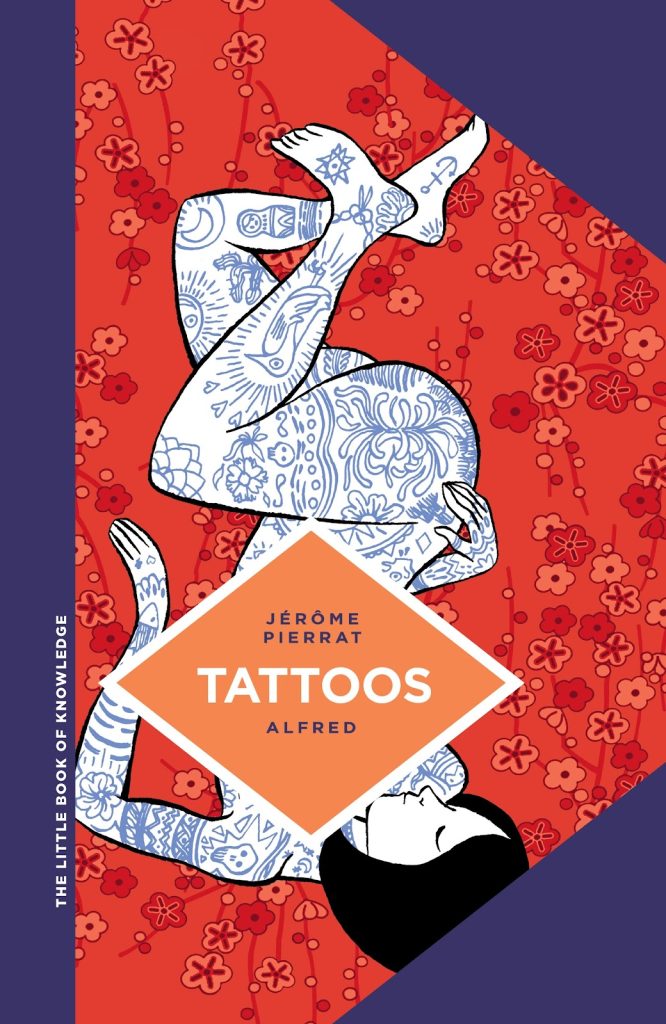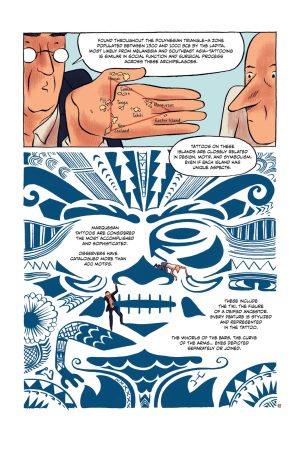Review by Ian Keogh
A joy of the Little Book of Knowledge series is the concentration on matters not usually presented in educational graphic novels, and tattoos are a generation-dividing subject. Despite a long history of body decoration around the world, the elderly still tend to associate them with sailors and gangsters, while the reality is your kid’s teacher is as likely to have a tattoo as a biker.
Jérôme Pierrat might not have a massive comics CV, but anyone who’s involved with the stunning Braquo TV show deserves immediate respect. He’s also a journalist specialising in crime, but what qualifies him to write this book is his editing a tattoo magazine in France. He provides a thorough history, beginning with the framing device of a prisoner hauled before the jail warden who’s a tattoo expert, before noting the long tattooing tradition among indigenous cultures. The habit was often ended by Christian missionaries and their narrow view of what’s acceptable, but also by some appalling processes detailed by Pierrat. By the late eighteenth century sailors visiting remote areas of the world began returning home with the tattoos similar to those they’d seen on locals. The journals of Captain James Cook contain the earliest references to the word ‘tattoo’, taken from the Polynesian word ‘tatau’, meaning to strike.
As is the mystifying French habit, artist Lionel Papagalli uses the pseudonym Alfred, and has far greater comics experience, his career stretching back to the early 1990s. His cartooning keeps the layouts simple in storytelling terms, using people composed from few lines, but the detail he applies to the tattoos heads well into overtime. The sheer variety and regional variance calls for considerable research, and lots of design work, especially when the history reaches Japanese culture.
Pierrat’s history moves through tattooed people earning a living through displaying themselves, the establishment of tattoo parlours, early practitioners to the gangster culture begun in prisons and army battalions formed from the worst soldiers. Widespread modern culture is only mentioned in passing at the end, and some might wish for greater information on individual practitioners, but Pierrat’s only providing a primer, with further reading recommended at the end. As such it’s a fascinating journey from which much can be learned.





